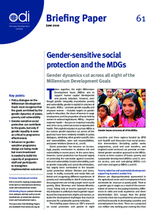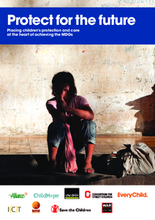Demographic Data
|
Sources: World Bank, UNDP, UNAIDS, DHS 2013 |
Displaying 13121 - 13130 of 14389
The focus of this thesis is the position of orphans, vulnerable children and orphanages in Ghana in relation to the ‘help’ they receive from western volunteers and NGOs.
L’Assemblée parlementaire prend note avec satisfaction des nombreux progrès accomplis ces dernières décennies par les Etats membres du Conseil de l’Europe en ce qui concerne les droits et le bien-être des enfants. Cela étant, dans le contexte de la mondialisation et de la crise économique actuelle, un nombre croissant d’enfants est confronté à de «nouveaux risques»: traite des enfants ou enfants abandonnés par leurs parents migrants.
Report looking at the milestones met and challenges ahead in responding to the needs of children and communities in earthquake affected Haiti. Includes reporting on child protection specific needs and the situation of children without parental care.
This child friendly report was produced to provide feedback to children who took part in the consultations for for developing EveryChild's conceptual framework -Every child deserves a family. Aimed at children 11 years and older, it can be used to initiate discussions about a loss of parental care and care and protection issues for youth.
This briefing paper draws on ODI’s research on social protection and gender in eight countries and three regions funded by DFID and AusAID and discusses how social protection interventions can promote an inter¬linked gender-sensitive approach to the MDGs.
The evidence presented in this paper shows that insufficient attention paid to equity across and within generations has devastating impacts for the achievement of the MDGs and for the wellbeing of children now and in the future.
This report argues that a failure to provide proper care and protection for children is hindering progress in the achievement of many of the MDGs.
Explores the ways that young people express their agency and negotiate complex lifecourse transitions according to gender, age and inter- and intra-generational norms in sibling-headed households affected by AIDS in East Africa.
The handbook provides operational guidance and tools to support effective protection responses in situations of internal displacement.
This guidance note is part of the Handbook for the Protection of Internally Displaced Persons launched by the Global Protection Cluster in Geneva in June 2010. The target audience is staff of humanitarian, human rights and development agencies working in IDP operations in the field.








